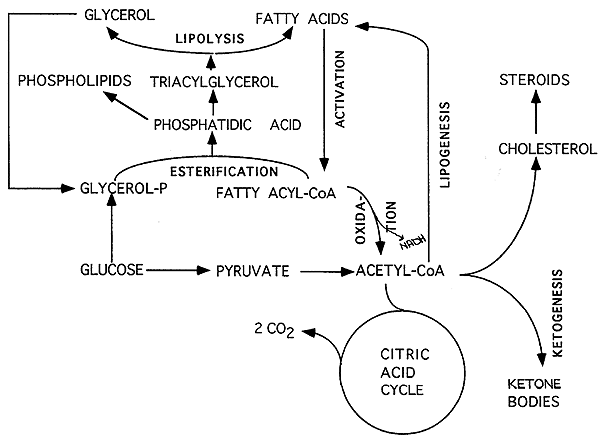
Fat Metabolism: Overview and Synthesis
Pathways of the Fat System:
Lipolysis: hydrolysis of triacylglycerol to glycerol and free fatty acids
b-Oxidation: mitochondrial oxidation of fatty acids -----> ENERGY!
Ketogenesis: synthesis of ketone bodies
Lipogenesis: fatty acid synthesis
Esterification: attachment of fatty acids to glycerol to form triglycerides
Cholesterolgenesis: synthesis of cholesterol (see "Cholesterol" Lecture)
Steroidogenesis: synthesis of steroid hormones from cholesterol
Interactions of Fat Metabolism Pathways:

Fat Metabolism in Specific Tissues:
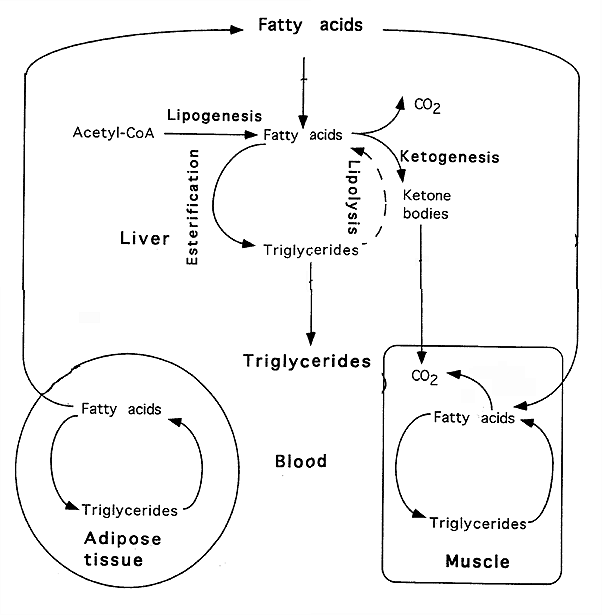
Liver: oxidizes fats, produces ketones, exports triglycerides
Muscle: uses fats and ketones as an energy source
Adipose Tissue: stores fats as triacylglycerol and releases fatty acids as needed for energy
Mature RBC's (no mitochondria) / Brain (lack of enzymes): do not use fats for energy
Fatty Acid Synthesis (Lipogenesis):
Export of Acetyl CoA for Fatty Acid Biosynthesis
AcetylCoA mit + 2ATP + NADH + NADP+ ---> AcetylCoA cyt + 2ADP + 2Pi + NAD+ + NADPH
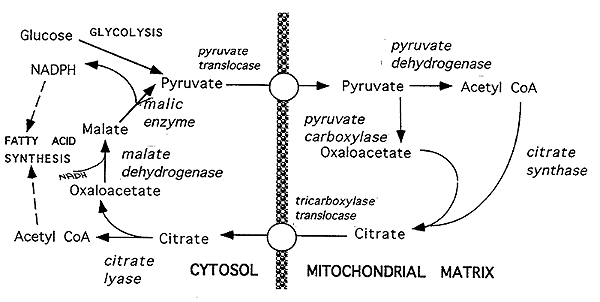
AcetylCoA Carboxylase: Acetyl CoA + HCO3- + ATP ----> Malonyl CoA
Committed Step, Highly Regulated
Fatty Acid Synthase:
AcetylCoA + 7MalonylCoA + 14NADPH + 14H+ ---> Palmitate + 7CO2 + 8CoA + 14NADP+
Dimeric Enzyme: each monomer has 7 enzyme activities
Primary Product: palmitic acid
Purpose: process the fatty acid chain through 7 cycles to produce the 16-C product; 4 C's are introduced in the first cycle from Acetyl CoA and Malonyl CoA; subsequent cycles 2 C units are derived from Malonyl CoA following the release of CO2
ACP = Acyl Carrier Protein
CE = Condensing Enzyme
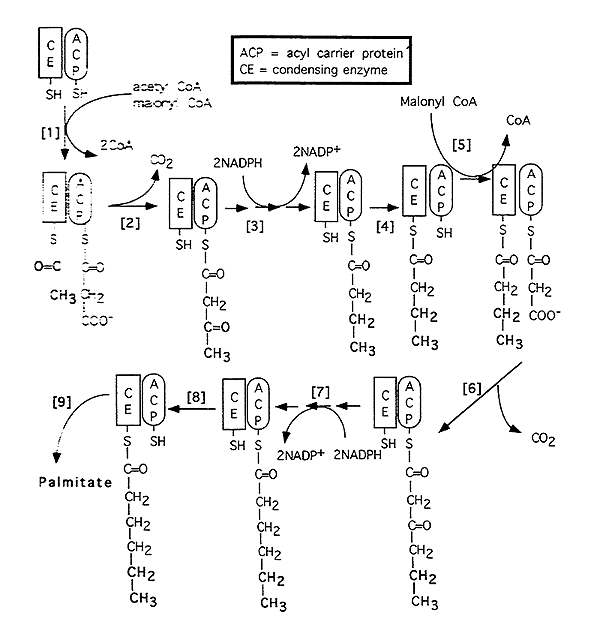
[1] ACP on one monomer is in close proximity to CE on the other monomer. The initial steps result in attachment of an acetyl group from acetyl CoA on CE and the malonyl group from malonylCoA on ACP.
[2] The acetyl group on CE condenses with the malonyl residue on ACP with the release of CO2.
[3] The ACP bound intermediate undergoes reduction by NADPH, dehydration, second reduction (NADPH).
[4] The 4 C fatty acid is transferred to the CE preparing the ACP for attachment of a second malonyl CoA.
[5] Malonyl CoA donates a malonyl group to ACP (as previously described).
[6] The 4 C group from CE condenses with the second malonyl residue with release of CO2.
[7] Reduction (NADPH), dehydration, second reduction (NADPH).
[8] The cycle is completed with the transfer of the growing hydrocarbon chain to CE.
[9] The process continues for 5 more cycles ([4] through [7]) with successive two C additions. Once a palmitoyl group is formed on ACP it is cleaved by thioesterase releasing palmitic acid (palmitate).
Acyl-CoA Synthetase:

Elongation: microsomal process (ER), requires malonylCoA and two NADPH, process is similar to that occurring with fatty acid synthase.
Unsaturation: microsomal process, reduction with NADPH or NADH, molecular oxygen is required.
Regulation of Lipogenesis:
Conditions Favoring Lipogenesis:

Esterification:
Formation of Phosphatidic Acid from Glycerol or Dihydroxyacetone Phosphate and its Conversion to Triacylglycerol or Phospholipids.
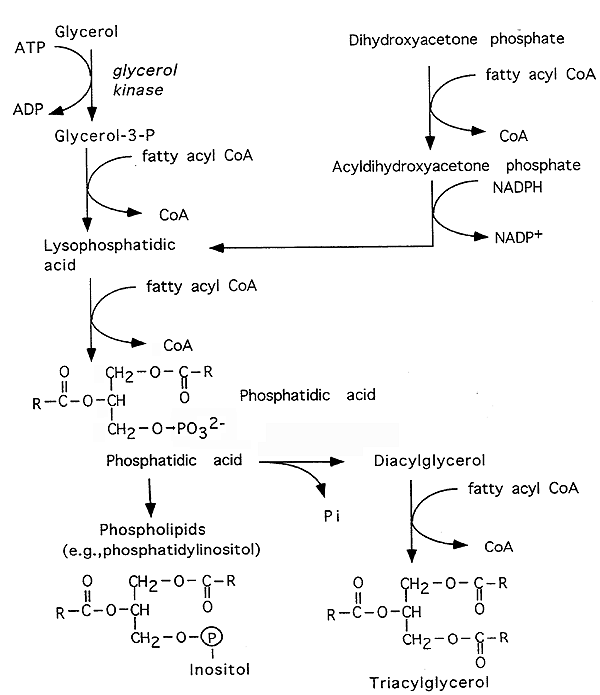
© Dr. Noel Sturm 2019